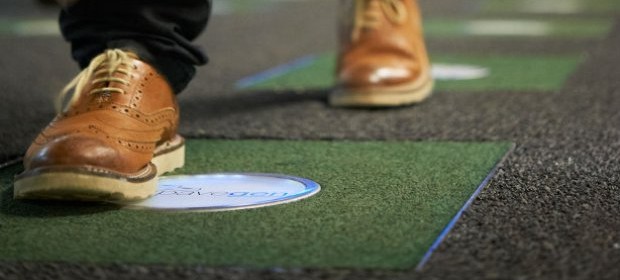Turning walks into watts

The average human being generates about eight watts of energy with each step, most of which is expended as vibration. It may not sound like much, but take the 30,000 or more people who pass through a major-city subway hub at rush hour, and suddenly you’ve got serious power. That’s usually a problem for architects and engineers, who have to design structures to withstand such small but persistent pressure. But the Facility, a London architecture firm, sees it as an opportunity. The company proposes putting small hydraulic generators in floors to capture vibration and convert it into electricity.
The Facility will roll out a prototype energy-harvesting staircase next year and ultimately use the technology, dubbed the Pacesetter, as part of a larger project to revamp London’s South Central subway stations. “For each footstep we can harvest three to five watts of energy,” says Claire Price, the director of the Facility. “In a rush-hour period in this country, some of the larger stations experience 34,000 people walking through it. At three to five watts, you’re generating a lot of kilowatt hours, enough to power all of the lighting and audio equipment within the building and beyond.” Price and her company are also developing a similar unit to be placed in train tunnels — essentially, as Price describes it, “a microgenerator that resonates in tune with passing trains and that will generate power that will then power a series of wire-free L.E.D. light units, such as street lamps.”
The Pacesetter is part of a growing body of devices that capture the diffuse energy emanating from human and natural activity, ranging from enormous ocean-borne floats that make use of wave energy to the devices in some tennis rackets that draw power from the impact with a ball and use it to counteract vibration, thus reducing strain on a player’s wrist. Someday, the Facility team speculates, systems like the Pacesetter will be everywhere — not just in the floor but anywhere small amounts of vibration or other ambient energy can be harvested efficiently: under roadbeds, at gyms, even inside fabric. “It goes on and on,” Price says. “The possibilities are endless.”

 Print
Print